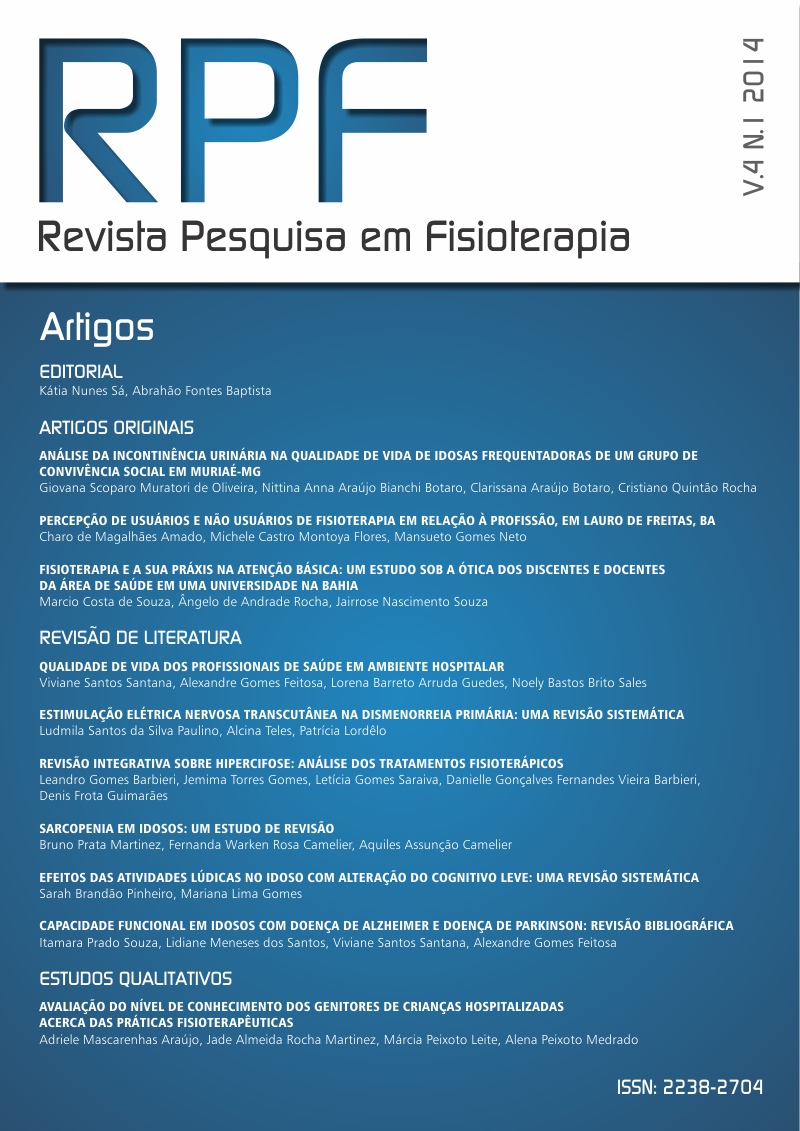ANALYSIS OF URINARY INCONTINENCE ON QUALITY OH LIFE IN OLDER OFTEN A GROUP OF SOCIAL INTERACTION IN MURIAÉ-MG
DOI:
https://doi.org/10.17267/2238-2704rpf.v4i1.379Keywords:
Epidemiologic Methods, Questionnaire, Quality of life and urinary incontinenceAbstract
This study aimed to analyze the impact of urinary incontinence (UI) in the quality of life (QOL) of elder women who are 60 years old or more and are participating in a support group in Muriaé city, Minas Gerais. The research is a study of a purposive sample. The participants were grouped in the inclusion criteria and besides they were interviewed individually and our support to do it was a questionnaire King’s Health Questionnaire (KHQ), which assesses the impact of UI on the QOL of women and contains eight domains: general health perception, incontinence impact, limitations of daily activities, physical and social limitations, personal relationships, emotions, sleep / mood and severity. In addition, there is a ranking from 0 to 100 in which higher scores indicating worse quality of life. The same questionnaire also poses questions that assess symptoms of incontinence, affecting daily activities, physical limitations, socias relations, among other aspects. The survey showed a correlation between the domains, highlighting the general health perception, sleep / mood and symptoms that stood out were nocturia, nocturnal enuresis and frequent use of the toilet (55%). In conclusion, was proven that UI has a moderate influence on QOL women, showing that the fact of being in constant contact with other seniors in the living group attended by them and participating in other activities proposed in it, makes the same if feel good.Downloads
Download data is not yet available.
Downloads
Published
06/06/2014
Issue
Section
Original Articles
How to Cite
1.
Muratori de Oliveira GS, Araújo Bianchi Botaro NA, Araújo Botaro C, Rocha CQ. ANALYSIS OF URINARY INCONTINENCE ON QUALITY OH LIFE IN OLDER OFTEN A GROUP OF SOCIAL INTERACTION IN MURIAÉ-MG. Rev Pesq Fisio [Internet]. 2014 Jun. 6 [cited 2024 Nov. 25];4(1):7-15. Available from: https://journals.bahiana.edu.br/index.php/fisioterapia/article/view/379



